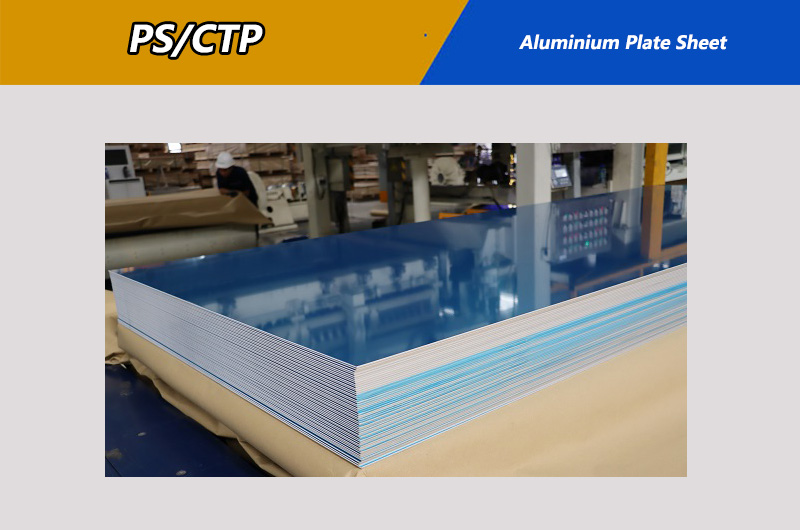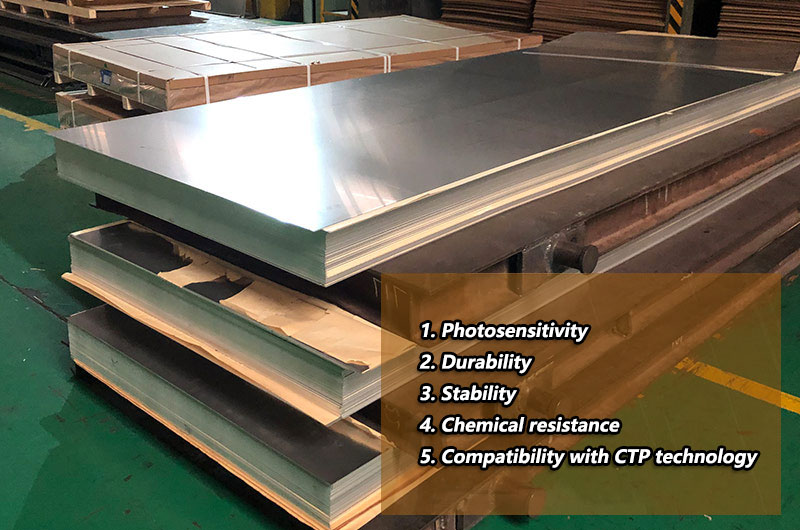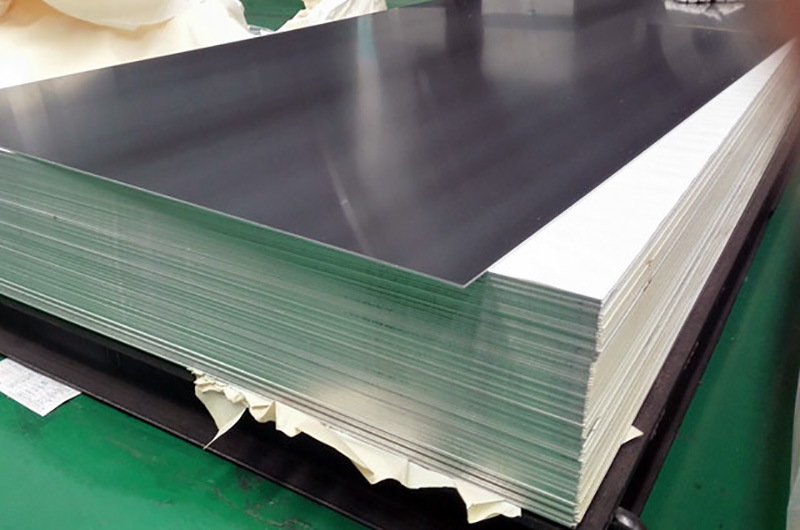- Why Aluminum in PS/CTP Plate Sheets
- Common Thickness Specifications of PS/CTP Aluminum Plate Sheets
- Aluminum for PS/CTP Substrate: Requirements for Aluminum Plate
- Alloys Used in PS/CTP Aluminum Plate Sheets
- Differences Between PS/CTP Plate Sheets of Different Alloys
- Common Problems PS/CTP Aluminum Plate Sheets and How to Solve Them
- People also search about PS/CTP Aluminium
The use of aluminum in PS/CTP (Presensitized Computer to Plate) plates is driven by several key properties that make aluminum an ideal material for this application.
The choice of aluminum, along with specific alloys, is based on factors such as light sensitivity, durability, and compatibility with the printing process.

Why Aluminum in PS/CTP Plate Sheets
1. Light Sensitivity
Aluminum is a suitable substrate for PS/CTP plates because it exhibits light sensitivity.
The presensitized coating on the plates reacts to laser exposure during the imaging process. This property allows for the creation of precise and detailed images on the plate, forming the basis for high-quality printing.
2. Durability and Stability
Aluminum is known for its durability and stability. These properties are crucial in the demanding environment of printing, where plates undergo multiple printing cycles and are exposed to various chemicals. The stability of aluminum ensures consistent performance and reliable printing results over time.
3. Chemical Resistance
Aluminum has good resistance to chemicals commonly used in printing processes, including inks and cleaning agents. This chemical resistance is essential for maintaining the integrity of the PS/CTP plates and ensuring their longevity.
4. Compatibility with CTP Technology
Aluminum's compatibility with Computer-to-Plate (CTP) technology is a key factor. CTP involves direct digital transfer of images to the printing plate, and aluminum serves as an excellent substrate for this process, facilitating efficient and high-resolution imaging.

Common Thickness Specifications of PS/CTP Aluminum Plate Sheets
PS/CTP Aluminum Plate Sheets come in various thickness specifications to cater to different printing requirements. Common thickness specifications include:
| Product | Thickness |
|---|---|
| PS/CTP Aluminum Plate Sheet | 0.15 mm |
| PS/CTP Aluminum Plate Sheet | 0.25 mm |
| PS/CTP Aluminum Plate Sheet | 0.30 mm |
| PS/CTP Aluminum Plate Sheet | 0.40 mm |
| PS/CTP Aluminum Plate Sheet | 0.50 mm |
The choice of thickness depends on factors such as the type of printing job, the printing press specifications, and the desired durability of the plate.
Aluminum for PS/CTP Substrate: Requirements for Aluminum Plate
- High Purity: Aluminum plates used for PS/CTP applications should be of high purity to ensure optimal light sensitivity during the imaging process.
- Smooth Surface: A smooth and even surface is crucial for achieving precise and detailed imaging. The substrate should be free from defects that could impact print quality.
- Uniform Thickness: Consistent plate thickness is essential for maintaining stability and ensuring uniform printing results across the entire plate surface.
- Chemical Compatibility: The aluminum should be compatible with the chemicals used in the PS/CTP plate development process, ensuring that the plate remains resistant to degradation over time.
Alloys Used in PS/CTP Aluminum Plate Sheets
The specific alloy used in PS/CTP Aluminum Plate Sheets can vary, but commonly used alloys include:
- 1050 PS/CTP Aluminium Plate Sheet
- 1060 PS/CTP Aluminium Plate Sheet
- 1070 PS/CTP Aluminium Plate Sheet
These alloys are part of the aluminum series known for their high purity and excellent formability. The choice of alloy may depend on factors such as cost, ease of fabrication, and specific performance requirements.

Differences Between PS/CTP Plate Sheets of Different Alloys
- Purity and Composition: Different aluminum alloys have varying levels of purity and alloying elements. While 1050, 1060, and 1070 are all relatively pure aluminum alloys, there may be subtle differences in their chemical compositions that can affect properties like corrosion resistance and formability.
- Strength and Hardness: Alloying elements can influence the strength and hardness of the aluminum. However, for PS/CTP plates, the emphasis is often on properties like light sensitivity and durability rather than mechanical strength.
- Cost Considerations: The cost of different aluminum alloys can vary. Alloys with higher purity or specific alloying elements may be more expensive. The choice of alloy may be influenced by cost considerations while ensuring that the selected alloy meets the required performance criteria.
In summary, aluminum, particularly alloys like 1050, 1060, and 1070, is chosen for PS/CTP plates due to its light sensitivity, durability, stability, chemical resistance, and compatibility with CTP technology. The specific alloy selection depends on a combination of factors, and the differences between alloys are often subtle, with a focus on meeting the unique requirements of the printing process.
Common Problems PS/CTP Aluminum Plate Sheets and How to Solve Them
1. Plate Scratching
Cause: Handling or processing errors.
Solution: Handle plates with care, use proper equipment during processing, and ensure a clean and controlled environment.
2. Inconsistent Imaging
Cause: Laser settings or plate exposure issues.
Solution: Calibrate laser settings according to manufacturer recommendations and ensure proper exposure conditions.
3. Chemical Streaking or Fogging
Cause: Contaminated processing solutions or improper developer concentration.
Solution: Maintain clean processing solutions, regularly check and replace developer solution, and ensure correct concentration.
4. Dot Gain or Loss
Cause: Improper ink-water balance or plate wear.
Solution: Adjust ink-water balance, monitor and maintain press conditions, and replace worn plates.
5. Plate Warping
Cause: Uneven drying or exposure to extreme temperatures.
Solution: Ensure proper drying conditions and storage, avoid exposure to excessive heat or cold.
Regular maintenance of equipment and proper handling practices can mitigate many common issues encountered with PS/CTP Aluminum Plate Sheets, ensuring consistent and high-quality printing results.
People also search about PS/CTP Aluminium
- What is the difference between CTP plate and PS plate?
- What material are CTP plates?
- What is thermal CTP plates?
- What is PS plate for printing?
